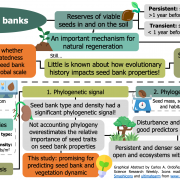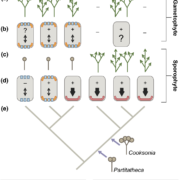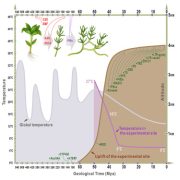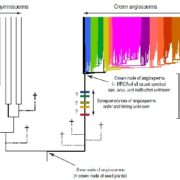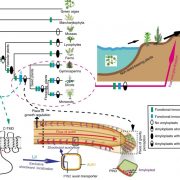Major domestication-related phenotypes in indica rice are due to loss of miRNA-mediated laccase silencing (Plant Cell)
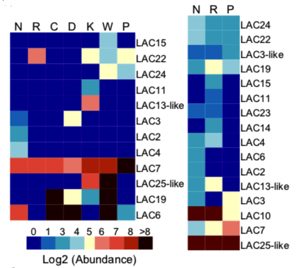 Rice (Oryza sativa) is derived from breeding of perennial wild ancestors with long stalks and few seeds to short plants with enlarged panicles (inflorescences). Many known domestication changes are due to changes in transcription factors or modulation of enzymatic actions. Recent work by Swetha et al. profiled small RNAs from multiple indica rice lines together with the wild species, and observed the unusual abundance primarily in the wild species of 22nt miRNA397, which results in selective degradation of laccases, which in turn contributes to reduction of stem lignification. Complementation with miRNA397 in cultivated rice lines shows a de-domestication phenotypic effect. miRNA397 is also known to be involved in increasing yield when overexpressed in japonica rice. Regulation of lignification by this miRNA also holds true for other crops. For example, S. pimpinellifolium, a wild relative of cultivated tomato, shows higher abundance of miR397 when compared to cultivated tomato lines. Hence this study sheds light on a previously unknown molecular phenomenon of miRNA regulated domestication-associated phenotypes in indica rice, and provides new tools for using miRNA397 as a probe in modern rice breeding programs. (Summary by Amey Redkar) Plant Cell: 10.1105/tpc.18.00472
Rice (Oryza sativa) is derived from breeding of perennial wild ancestors with long stalks and few seeds to short plants with enlarged panicles (inflorescences). Many known domestication changes are due to changes in transcription factors or modulation of enzymatic actions. Recent work by Swetha et al. profiled small RNAs from multiple indica rice lines together with the wild species, and observed the unusual abundance primarily in the wild species of 22nt miRNA397, which results in selective degradation of laccases, which in turn contributes to reduction of stem lignification. Complementation with miRNA397 in cultivated rice lines shows a de-domestication phenotypic effect. miRNA397 is also known to be involved in increasing yield when overexpressed in japonica rice. Regulation of lignification by this miRNA also holds true for other crops. For example, S. pimpinellifolium, a wild relative of cultivated tomato, shows higher abundance of miR397 when compared to cultivated tomato lines. Hence this study sheds light on a previously unknown molecular phenomenon of miRNA regulated domestication-associated phenotypes in indica rice, and provides new tools for using miRNA397 as a probe in modern rice breeding programs. (Summary by Amey Redkar) Plant Cell: 10.1105/tpc.18.00472


